L’Homme au Masque de Fer, The Man in the Iron Mask
We all know the story of the mysterious prisoner in the iron mask Alexandre Dumas tells us in his 1847 roman The Vicomte of Bragelonne and that has been put on the screen in various forms with various alterations ever since. Dumas tells us of a man imprisoned “for the good of France” shortly after his birth, this man is called Philippe and the twin brother of Louis XIV.
Only few were in the know of his existence, his father Louis XIII and his mother Anne d’Autriche, by whose orders the boy was imprisoned, and the Duchesse de Chevreuse, the latter makes the plot known to Musketeer Aramis, her former lover, who in turn plots to have the King replaced with his twin brother as puppet-ruler for himself and Fouquet. Aramis’ plans are great, he aims to become Pope, and with the help of Porthos manages to free Philippe and bring him to Vaux-le-Vicomte, where Fouquet hosts a splendid party for the King. Aramis and Pothos kidnap the King and bring him to the Bastille, where he is imprisoned as Philippe, while Philippe takes over as King without anyone realising. As Fouquet hears of this, he isn’t too happy and wants no part in such treachery, so he rushes to the Bastille and frees Louis to exchange him with Philippe. Louis is brought back to Vaux, Aramis and Porthos flee, and d’Artagnan assists in ending Philippe’s brief reign. Louis banishes Philippe, ordering that “he will cover his face with an iron visor” which he “cannot raise without peril of his life.”
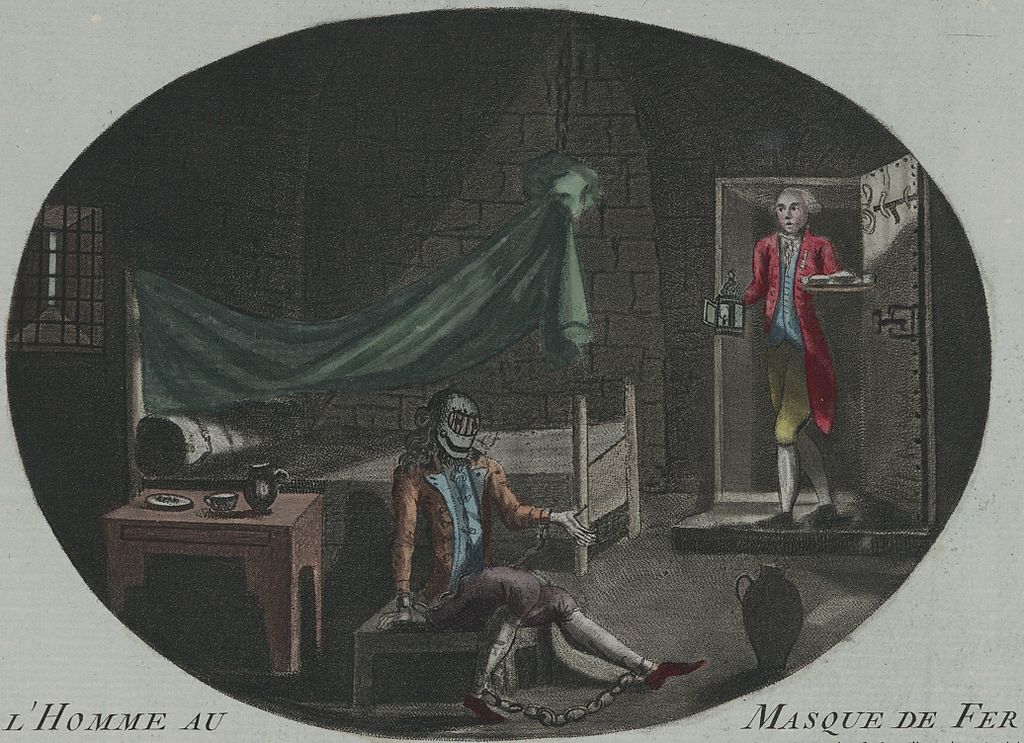 What Dumas wrote in the mid of the 19th century is actually partly based on a real person, a real masked prisoner, but his mask was not of iron, it was made of black velvet, and until this day nobody can quite say who he was. This man was imprisoned 1669 or 1670 and his name recorded as Eustache Dauger, yet he was buried in 1703 under the name of Marchioly.
What Dumas wrote in the mid of the 19th century is actually partly based on a real person, a real masked prisoner, but his mask was not of iron, it was made of black velvet, and until this day nobody can quite say who he was. This man was imprisoned 1669 or 1670 and his name recorded as Eustache Dauger, yet he was buried in 1703 under the name of Marchioly.
The earliest surviving mention of the matter is from 1669 and in form of a letter sent to Bénigne Dauvergne de Saint-Mars, governor of the prison of Pignerol, by the Marquis de Louvois, Secretary of State for War under Louis XIV since 1666. This letter informs Saint-Mars of the expected arrival of a prisoner of the name Eustache Dauger and orders him to prepare a cell with multiple doors, one closing upon the other, to prevent anyone from the outside to overhear a word spoken inside. Saint-Mars was furthermore ordered to see this mysterious prisoner only once a day in order to provide him with food and whatever else was needed, while Dauger himself was ordered not to speak of anything other than his immediate needs or he will be killed on the spot. According to Louvois, the prisoner should not require much since he was “only a valet“.
Dauger was apparently arrested by Captain Alexandre de Vauroy, garrison commander of Dunkirk, and taken to Pignerol, where he arrived in late August, yet there is evidence that actually suggests the arrest took place in Calais, while not even the local governor was informed of the event.

At this point the first rumours suggesting the prisoner might be not so much of an valet but more of an Marshal of France began to circulate.
Valet or Marshal, Dauger had prominent company at Pignerol, namely Nicolas Fouquet, Antoine Nompar de Caumont, and Ercole Antonio Mattioli. Nicolas Fouquet, former Superintendent of Finances, was in Pignerol since his arrest in 1661 and with no hope of ever being released. Antoine Nompar de Caumont, Duc de Lauzun, was there since November 1671 for being engaged to the King’s cousin without his consent. Ercole Antonio Mattioli had been kidnapped and jailed for double-crossing the French over the purchase of the important fortress town of Casale on the Italian border.
Saint-Mars describes Dauger in his letters to Louvois as a quiet man, giving no trouble, “disposed to the will of God and to the king“, compared to his other prisoners, who were either always complaining, constantly trying to escape, or simply mad.
Let us summarise, thus far we have a man in one of the most infamous prisons of the time, ordered to wear a mask of black velvet, ordered not to speak unless necessary, threatened to be killed if he should do otherwise, but he was not always isolated from the other prisoners. Nicolas Fouquet had a manservant at Pinerol named La Rivière, who was ill from time to time, and Saint-Mars sought permission of Louvois in 1675 to have Dauger act as Fouquet’s servants in case La Rivière was indisposed. Louvois gave his permission on the condition that Dauger was not to meet anyone else. Lauzun, for example. The reason for it is simple: Lauzun was expected to be released at some point in the future, while it was unlikely for Fouquet ever to be released, thus whatever might be said by Dauger to Fouquet would never leave the walls of Pignerol, while Lauzun, when released, might speak of Dauger’s existence.
The fact that the person called Dauger acted as valet to the disgraced Fouquet, makes it unlikely for him to have been of Royal Blood, as some have claimed during the centuries. 17th century protocol made it unthinkable that a man of Royal Blood, even when imprisoned, would act as valet to anyone. In fact, as possible brother to the King, protocol would forbid Dauger to even reach for something himself. Everything would have been presented to him.
In 1680, shortly after Fouquet died in his cell, Saint-Mars discovered a secret hole between Fouquet and Lauzun’s cells, Lauzun’s being located above that of Fouquet’s. It was suspected Lauzun might have been made aware of Dauger’s existence this way, and Louvois swiftly instructed Saint-Mars to move Lauzun to Fouquet’s cell and to tell him that Dauger and La Rivière had been released, when in fact both were held at a different part of Pignerol.
The Duc de Lauzun was released in 1681 and later the same year Saint-Mars was appointed governor of the prison fortress of Exiles, he took both Dauger and La Rivière with him. La Riviere died in May 1687 and Saint-Mars and Dauger moved once again, this time to Sainte-Marguerite, one of the Lérins Islands, close to Cannes, where Dauger was again placed in a cell with multiple doors.
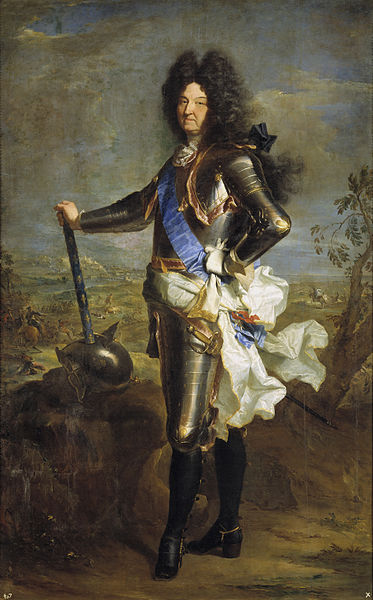 Two years later, in 1689, Saint-Mars took up his new post as governor of the Bastille in Paris, and again, Dauger moved with him. He was placed in a solitary cell in the Bertaudière tower and the prison’s second-in-command, de Rosarges, was to feed him. Lieutenant du Junca, another officer of the Bastille, noted that the prisoner wore “a mask of black velvet“.
Two years later, in 1689, Saint-Mars took up his new post as governor of the Bastille in Paris, and again, Dauger moved with him. He was placed in a solitary cell in the Bertaudière tower and the prison’s second-in-command, de Rosarges, was to feed him. Lieutenant du Junca, another officer of the Bastille, noted that the prisoner wore “a mask of black velvet“.
Dauger died on 19 November 1703 and was swiftly buried the next day under the name of Marchioly. His furniture and clothing were destroyed afterwards, the walls of his cell scraped and whitewashed, everything of metal which the man had possessed, or used, melted down.
At the point of his death, stories of the existence of this mysterious prisoner were already circulating. Louis XIV’s sister in law Élisabeth-Charlotte du Palatinat, second wife of his brother Philippe, even mentions Dauger in a letter to her aunt, the Electress of Hanover and at this time heiress presumptive to the Kingdom of Great Britain. Élisabeth states the prisoner was very devout, well treated, received everything he desired and had “two musketeers at his side to kill him if he removed his mask.“. She wrote this eight years after Daugers death, thus it is possible what she wrote might just be a enumeration of rumours she heard.
Theories about the real identity of the man with the velvet mask are vast, so let us look at some and decide for yourself who might be behind the mask.
The King’s Brother
As we know, Louis XIV had a brother with the name Philippe, who was born in 1640, two years after Louis himself. His life is well documented and he might have worn masks from time to time, yet never one made of iron, nor was he ever imprisoned. Today the Dumas-brother-of-the-King story is the best known, but already before Dumas wrote his novel, Voltaire claimed that the prisoner was a son of Anne d’Autriche and Cardinal de Mazarin, and therefore an illegitimate half-brother of King Louis XIV. Voltaire also claims the prisoner had already been “arrested” in 1661, a few months after the death of Mazarin, shortly after Louis XIV was made aware of his existence. Alexandre Dumas used this theory in his book and made the prisoner an identical twin of Louis XIV. French novelist Marcel Pagnol (1895-1974) claims this twin brother grew up in the countryside and was sent to England later on, part of an intrigue to overthrow the King, he was arrested on his return to Dunkirk.
The King’s Father
One possible candidate argued to have been the masked man was François de Vendôme, he died at Siege of Candia in 1669, yet some claimed he was actually arrested and locked away, the reason for it being that Vendôme was the actual father of Louis XIV…. unlikely if one considers the talk of Vendôme’s head being carried on a pike through Constantinople.
Hugh Ross Williamson, author of “Who was the Man in the Iron Mask?”, also argues the man in the iron mask was actually the father of Louis XIV and not a brother. This theory states the “miraculous” birth of Louis XIV in 1638 was indeed miraculous considering his parents had been estranged for fourteen years and Louis XIII may have been impotent. It suggests Cardinal de Richelieu, had arranged for a substitute, probably an illegitimate son or grandson of Henri IV, to become intimate with the Queen and father an heir. At this time Louis XIII’s brother Gaston d’Orléans was heir presumptive to the throne of France and all three, Louis XIII, Anne, and Richelieu, had good reasons to prevent Gaston from becoming King. Richelieu would have most likely lost his job and life, Anne would have been removed from any influence, and Louis XIII was quite opposed to his brother. Therefore he might have agreed to such a scheme. Supposedly the father then left for New France, but returned to France in the 1660s with the aim of extorting money for keeping his secret and was promptly imprisoned. This theory would explain both the secrecy surrounding the prisoner, whose true identity would have destroyed the legitimacy of Louis XIV had it been revealed, and also – because of the King’s respect for his own father – his comfortable imprisonment and why he was not simply killed. This theory was first mentioned by Hugh Cecil, 1st Baron Quickswood (1869-1956), with the note that this idea has no historical basis and is hypothetical. Williamson said it is a guess with no solid historical basis and like every other theory on the matter. It might make more sense than most of the other theories, but there is no known evidence that is incompatible with it.
Another story claims Anne d’Autriche had an affair with George Villiers, 1. Duke of Buckingham, or the Musketeer Officer Francois de Cavoye, who actually had a 1637 born son with the name Eustache Dauger.
A man named Marc de Morelhie was also suggested to the prisoner. He was the son-in-law of Anne d’Autriche’s physician, who was said to have been present at the autopsy of Louis XIII when apparently a Impotentia Generandi was discovered. Morelhie was informed of it by his father-in-law according to this theory and imprisoned due to it. Morelhie, however died already in 1680 and his father-in-law was also not present at the autopsy.
A French General
A other theory gives us the name Vivien de Bulonde as possible masked man. It is based at the discovery of coded letters in 1890 by Louis Gendron, a French military historian, who passed them to Etienne Bazeries at the cryptographic department of the French army. Three years later parts were of it were decoded and a reference to Vivien de Bulonde and a crime committed by him found. At the Siege of Cuneo in 1691, Bulonde was concerned about enemy troops arriving from Austria and ordered a hasty withdrawal, leaving behind his munitions and wounded men.
Louis XIV was furious and in another of the letters specifically said “His Majesty knows better than any other person the consequences of this act, and he is also aware of how deeply our failure to take the place will prejudice our cause, a failure which must be repaired during the winter. His Majesty desires that you immediately arrest General Bulonde and cause him to be conducted to the fortress of Pignerole, where he will be locked in a cell under guard at night, and permitted to walk the battlement during the day with a 330 309.“. The “330” and “309” code-groups appeared only once in the correspondence, so it is impossible to confirm what they stand for. Bazeries verified General Bulonde was disgraced and removed from command, so he reasoned 330 and 309 stood for masque and a full stop. However, in 17th-century French avec un masque would mean “in a mask” and Bulonde’s arrest seems to have been no secret and was actually published in a newspaper at the time and he was released after just a few months. His death is also recorded as happening in 1709, six years after that of the man in the mask.
The Valet
Andrew Lang, in his The Valet’s Tragedy and Other Stories (1903), presented a theory that “Eustache Dauger” was a prison pseudonym of a man called “Martin,” valet of the Huguenot Roux de Marsilly. After his master’s execution in 1669 the valet was taken to France, possibly by capture or subterfuge, and imprisoned because he might have known too much about his master’s affairs. Another theory states the prisoner was a valet that somehow was in knowledge of secrets of the state.
A Son Of Charles II
In The Man of the Mask (1908), Arthur Barnes presents James de la Cloche, the alleged illegitimate son of the reluctant Protestant Charles II of England, who would have been his father’s secret intermediary with the Catholic court of France. Louis XIV could have imprisoned him because he knew too much about French affairs with England. One of Charles’s confirmed illegitimate sons has also been proposed as the man in the mask. This was the Duke of Monmouth. A Protestant, he led a rebellion against his uncle, the Catholic King James II. The rebellion failed and Monmouth was executed in 1685. But in 1768, a writer named Saint-Foix claimed that another man was executed in his place and that Monmouth became the masked prisoner, it being in Louis XIV’s interests to assist a fellow Catholic like James who would not necessarily want to kill his own nephew.
Government Minister
Other popular suspects have included men known to have been held at Pignerol at the same time as Dauger. Fouquet himself has been considered, but the fact that Dauger is known to have served as his valet makes this unlikely.
Italian Diplomat
Another candidate, much favoured in the 1800s, was Fouquet’s fellow prisoner Count Ercole Antonio Mattioli (or Matthioli). He was an Italian diplomat who acted on behalf of debt-ridden Charles IV, Duke of Mantua in 1678, in selling Casale, a strategic fortified town near the border with France. A French occupation would be unpopular, so discretion was essential, but Mattioli leaked the details to France’s Spanish enemies, after pocketing his commission once the sale had been concluded, and they made a bid of their own before the French forces could occupy the town. Mattioli was kidnapped by the French and thrown into nearby Pignerol in April 1679. The French took possession of Casale two years later.
Eustache Dauger de Cavoye
In his letter to Saint-Mars announcing the imminent arrival of the prisoner who would become the “man in the iron mask,” Louvois gave his name as “Eustache Dauger” and historians have found evidence that a Eustache Dauger was living at the time and was involved in shady and embarrassing events involving people in high places known as l’Affaire des Poisons. His full name was Eustache Dauger de Cavoye.
Records indicate that he was born on 30 August 1637, the son of François Dauger, a captain in Cardinal Richelieu’s guards. When François and his two eldest sons were killed in battle, Eustache became the nominal head of the family. Like them he joined the army where he came under the command of Armand de Gramont, Comte de Guiche.
In April 1659, Eustache and Guiche were invited to an Easter weekend party at the castle of Roissy-en-Brie along with many young prominent men of court, such as Philippe-Jules Mancini, the nephew of Cardinal Mazarin. It was a debauched affair of merry-making, with the men involved in all sorts of “sordid” activities, including attacking a man who claimed to be Cardinal Mazarin’s attorney. It was also claimed, among other things, that a black mass was enacted, and that a pig was baptised as “carp” in order to allow them to eat pork on Good Friday.
When news of these events became public an enquiry was held and the various perpetrators jailed or exiled. There is no record as to what happened to Dauger, but in 1665, near the Château de Saint-Germain-en-Laye, he allegedly killed a young page boy in a drunken brawl involving the Duc de Foix. The two men claimed that they had been provoked by the boy who was drunk, but the fact that the killing took place near a castle where the King was staying meant that this was not a good enough explanation and, as a result, Dauger was forced to resign his commission.
In the 1930s, historian Maurice Duvivier linked Eustache Dauger de Cavoye to the Affair of the Poisons. An investigation had been launched, but Louis XIV had instigated a cover-up when it appeared that his mistress, Madame de Montespan, and his sister-in-law, Henriette, Duchesse d’Orléans, were involved. The records show that during the enquiry the investigators were told about a supplier of poisons, a surgeon named Auger, and Duvivier became convinced that Dauger de Cavoye, disinherited and short of money, had become Auger, the supplier of poisons, and subsequently Dauger, the man in the mask. In a letter sent by Louvois to Saint-Mars, shortly after Fouquet’s death while in prison, with Dauger acting as his valet, the minister adds a note in his own handwriting, asking how Dauger performed certain acts that Saint-Mars had mentioned in a previous now lost correspondence and “how he got the drugs necessary to do so“. Duvivier suggested that Dauger may have poisoned Fouquet as part of a complex power-struggle between Louvois and his rival Colbert. However, evidence has emerged that Dauger de Cavoye actually died in the Prison Saint-Lazare, an asylum run by monks which many families used in order to imprison their “black sheep”. Documents have survived indicating that Dauger de Cavoye was held at Saint-Lazare in Paris at about the same time that Dauger, the man in the mask, was taken into custody in Pignerol, hundreds of miles away in the south.
Other Possibilities
It might have been a man of common birth with an odd resemblance to the King that tried to act as an imposer.
Historian Jean-Christian Petitfils suggest there might have been a prisoner, but the story of the mask and importance of the prisoner was just a tale to keep the guards motivated. It is also suggested the man was a son of Louis XIV and Louise de La Vallière, who dared to slap the Dauphin and was thus arrested and locked away. A different tale states it was the Chevalier de Harmoises, who was arrested after plotting against the King. Richard Cromwell, son of Oliver Cromwell, who vanished from 1671 to 1680, was claimed to the be the masked man by some.

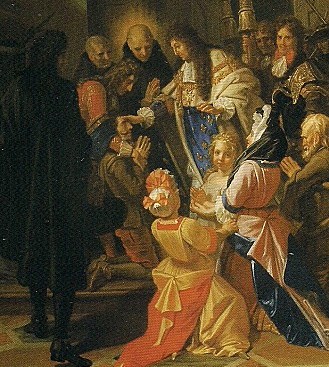
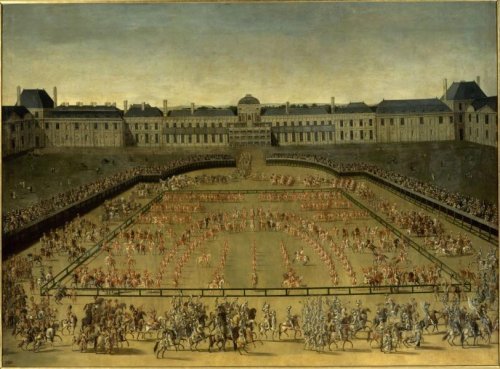
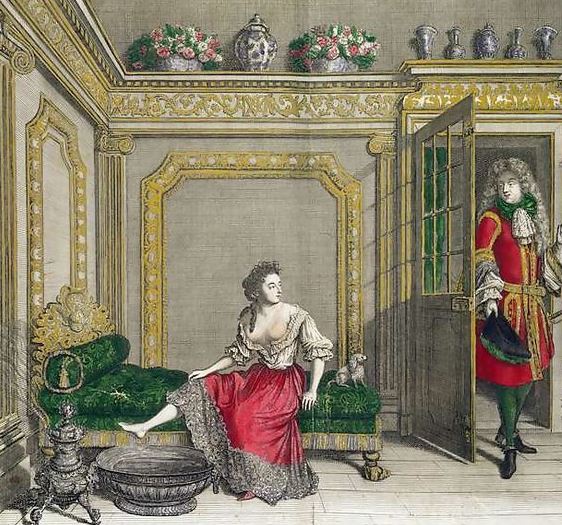
One Comment
Dan Mitchell
Are there any Fora where the various theories are publicly discussed ? – (preferably in English)
What is the evidence that “La Riviere” died in 1687 , and not “Dauger” ?
Where is the evidence of”Mattioli” having died ?
Apparently an inventory of St. Mars has recently been discovered – what if anything does this add to our knowledge ?